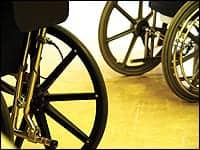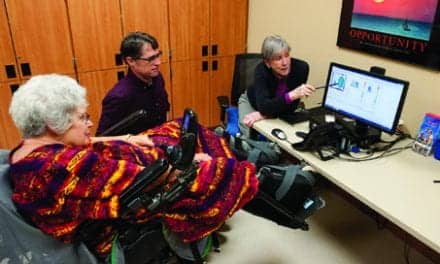The US Food and Drug Administration (FDA) announces in a press release that it has authorized the use of an above-the-knee prosthesis for adults who have rehabilitation problems with, or cannot use, a conventional socket prosthesis.
Called the Osseoanchored Prostheses for the Rehabilitation of Amputees (OPRA), the device instead uses fixtures and screws implanted into the patient’s remaining thigh bone to connect an external prosthetic limb, per the release.
“Prostheses can help people who have lost a leg due to trauma or cancer to regain mobility and to more easily participate in everyday activities,” says William Maisel, MD, MPH, acting director of the Office of Device Evaluation in the FDA’s Center for Devices and Radiological Health, in the release.
“The OPRA device may help those with above-the-knee amputations who have had problems with rehabilitation and have not been able to benefit from available socket prostheses,” he continues.
The release explains that the OPRA device is installed with two surgical procedures. In the first procedure, a cylinder-shaped fixture is implanted into the central canal of the remaining thigh bone. Approximately 6 months later, after tissue has grown to anchor the fixture and the skin tissue has healed, a second surgery is performed to implant a rod that attaches to the fixture from the previous surgery. This rod extends through the skin at the bottom of the patient’s residual limb and connects to the prosthetic leg.
After the second surgery, the patient works with a trained physical therapist to gradually place weight on the OPRA device using a training prosthesis. Patients require about 6 months of training and rehabilitation after the second surgery, before being fitted with their own customized prosthesis by a trained prosthetist, the release continues.
The OPRA device received a Humanitarian Use Device (HUD) designation and was reviewed through the Humanitarian Device Exemption (HDE) pathway, per the release.
Data supporting the safety and probable benefit of the OPRA device included mechanical testing of the device’s parts when subjected to weight, twisting, bending and simulated repeated use, and a 2-year, 51-subject clinical trial, the release notes.
The clinical trial found that study subjects reported increased prosthetic use, and improved mobility, comfort, function, and quality of life compared to the subjects’ own outcomes prior to the surgeries. The most common adverse event was infection, the release explains.
The OPRA device is manufactured by Integrum AB in Molndal, Sweden, per the release.
[Source: US Food and Drug Administration]





